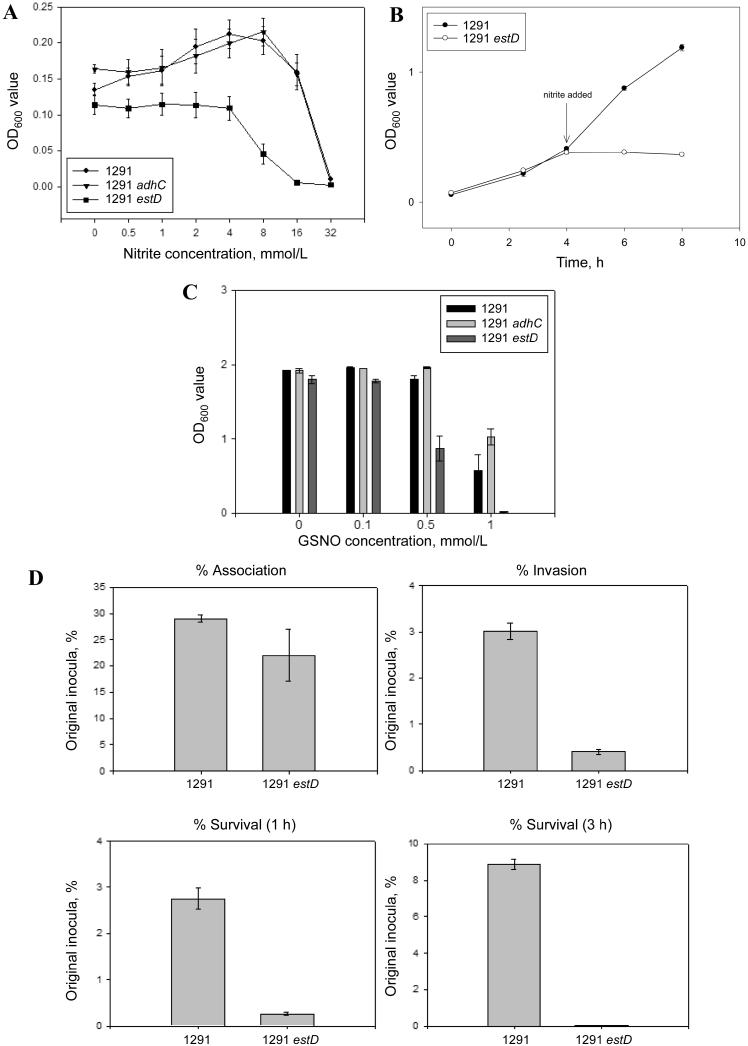Figure 2.
A, Microaerobic growth of Neisseria gonorrhoeae 1291 wild-type (WT), adhC, and estD strains in the presence of sodium nitrite. Points denote the mean end point absorbance reading of triplicate cultures, and Y-error bars denote ±1 standard deviation (SD) from the mean. B, The effect of the addition of nitrite on the microaerobic growth rate of N. gonorrhoeae 1291 WT and estD strains. A total of 5 mmol/L sodium nitrite was added to cultures after incubation at 37°C for 4 h. Points denote the mean absorbance readings of triplicate cultures, and Y-error bars denote ±1 SD from the mean. C, Growth of N. gonorrhoeae WT, adhC, and estD strains in chemically defined media in the presence of different concentrations of S-nitrosoglutathione (GSNO). Bars denote the mean end point absorbance readings of duplicate cultures, and Y-error bars denote ±1 SD from the mean. D, Gonococcal association with and intracellular survival within primary human cervical epithelial (pex) cells. Bars depicted in each graph denote the mean percentage of total association, invasion, or survival calculated from 3 experiments performed in triplicate; error bars denote the variance of the mean. Percentages were determined as a function of the original inoculum and the no. of colony-forming units evident after plating the cervical cell lysates. A Kruskal-Wallis nonparametric analysis of variance was used to determine the statistical significance of the data obtained for the estD mutant after comparison with assays performed using wild-type gonococci. P< .001, for the estD mutant under each condition assayed.

